Risk factors of postoperative delirium in the knee and hip replacement patients: a systematic review and meta-analysis
- PMID: 33482875
- PMCID: PMC7821501
- DOI: 10.1186/s13018-020-02127-1
Risk factors of postoperative delirium in the knee and hip replacement patients: a systematic review and meta-analysis
Abstract
Background: The risk factors of postoperative delirium (POD), a serious while preventable complication, developed by patients undergoing knee and replacement surgery are still under investigation. In this systematic review and meta-analysis, we identified risk factors associated with POD in knee and hip replacement.
Methods: PubMed, Ovid MEDLINE, and Ovid EMBASE were used to identify original researches. The studies evaluating the risk factors of POD after knee and hip replacement were reviewed, and the qualities of the included studies were assessed with Newcastle-Ottawa Scale. Data were extracted, pooled, and a meta-analysis was completed RESULT: Twenty-two studies were finally included with a total of 11934 patients who underwent knee or hip replacement and 1841 developed POD with an incidence of 17.6% (95% confidential interval (CI) 13.2-22.0%). Eighteen significant risk factors were identified including advanced age (odds ratio (OR) 1.15 95% CI 1.08-1.22), cognitive impairment (OR 6.84, 95% CI 3.27-14.33), history of cerebrovascular events (OR 2.51, 95% CI 1.28-4.91), knee replacement (OR 1.42, 95% CI 1.00-2.02), blood loss (standardized mean difference (SMD) 0.30, 95% CI 0.15-0.44), dementia (OR 3.09, 95% CI 2.10-4.56), neurologic disorders (OR 2.26, 95% CI 1.23-4.15), psychiatric illness (OR 2.74, 95% CI 1.34-5.62), and obstructive sleep apnea (OR 4.17, 95% CI 1.72-10.09) along with several comorbidity evaluation scores and laboratory markers.
Conclusion: We identified risk factors consistently associated with the incidence of POD in knee and hip replacement. Strategies and interventions should be implemented to the patients receiving knee or hip replacement with potential risk factors identified in this meta-analysis.
Keywords: Hip replacement; Knee replacement; Postoperative delirium; Risk factors.
Conflict of interest statement
The authors declare that they have no conflict of interest.
Figures

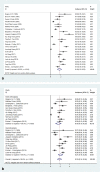
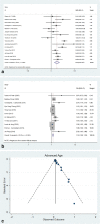
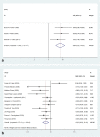

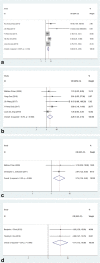
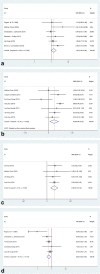
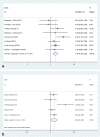
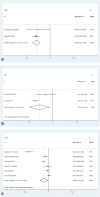
Similar articles
-
Predictors of postoperative delirium in elderly patients following total hip and knee arthroplasty: a systematic review and meta-analysis.BMC Musculoskelet Disord. 2021 Nov 12;22(1):945. doi: 10.1186/s12891-021-04825-1. BMC Musculoskelet Disord. 2021. PMID: 34772392 Free PMC article.
-
The effect of perioperative cognitive training on postoperative delirium in older patients undergoing total hip and knee arthroplasty: a prospective randomised trial.Age Ageing. 2025 Mar 3;54(3):afaf020. doi: 10.1093/ageing/afaf020. Age Ageing. 2025. PMID: 40057984 Clinical Trial.
-
Postoperative delirium following total joint arthroplasty: epidemiology, risk factors, and associated complications.Hip Int. 2025 Mar;35(2):150-158. doi: 10.1177/11207000241305771. Epub 2024 Dec 11. Hip Int. 2025. PMID: 39663648
-
Increased Risk of Postoperative Complications in Patients Who Have Obstructive Sleep Apnea Undergoing Total Joint Arthroplasty: A Systematic Review and Meta-Analysis.J Arthroplasty. 2024 Dec;39(12):3119-3127.e1. doi: 10.1016/j.arth.2024.06.015. Epub 2024 Jun 14. J Arthroplasty. 2024. PMID: 38880405
-
Protocol for a single-centre prospective observational study of postoperative delirium following total joint arthroplasties among South East Asians.BMJ Open. 2018 Mar 6;8(3):e019426. doi: 10.1136/bmjopen-2017-019426. BMJ Open. 2018. PMID: 29511014 Free PMC article.
Cited by
-
Intravenous acetaminophen for postoperative delirium in older patients recovering from major non-cardiac surgery: a randomised-controlled study protocol.BMJ Open. 2025 May 15;15(5):e097079. doi: 10.1136/bmjopen-2024-097079. BMJ Open. 2025. PMID: 40379334 Free PMC article.
-
Risk Factors and a Nomogram Model Establishment for Postoperative Delirium in Elderly Patients Undergoing Arthroplasty Surgery: A Single-Center Retrospective Study.Biomed Res Int. 2021 Dec 2;2021:6607386. doi: 10.1155/2021/6607386. eCollection 2021. Biomed Res Int. 2021. PMID: 34901277 Free PMC article.
-
Risk prediction models for postoperative delirium in elderly patients with hip fracture: a systematic review.Front Med (Lausanne). 2023 Sep 15;10:1226473. doi: 10.3389/fmed.2023.1226473. eCollection 2023. Front Med (Lausanne). 2023. PMID: 37780558 Free PMC article.
-
Risk factors for postoperative delirium in patients undergoing orthopedic procedures: a systematic review and meta-analysis.PLoS One. 2025 Apr 1;20(4):e0321025. doi: 10.1371/journal.pone.0321025. eCollection 2025. PLoS One. 2025. PMID: 40168626 Free PMC article.
-
Effect of obstructive sleep apnea on postoperative delirium: a system review and meta-analysis.Sleep Breath. 2024 Oct;28(5):1867-1877. doi: 10.1007/s11325-024-03073-6. Epub 2024 Jun 11. Sleep Breath. 2024. PMID: 38861133
References
-
- Inouye SK, Marcantonio ER, Kosar CM, Tommet D, Schmitt EM, Travison TG, Saczynski JS, Ngo LH, Alsop DC, Jones RN. The short-term and long-term relationship between delirium and cognitive trajectory in older surgical patients. Alzheimers Dement. 2016;12(7):766–775. doi: 10.1016/j.jalz.2016.03.005. - DOI - PMC - PubMed
-
- Chen CC-H, Li H-C, Liang J-T, Lai IR, Purnomo JDT, Yang Y-T, Lin B-R, Huang J, Yang C-Y, Tien Y-W, Chen C-N, Lin M-T, Huang G-H, Inouye SK. Effect of a modified hospital elder life program on delirium and length of hospital stay in patients undergoing abdominal surgery: a cluster randomized clinical trial. JAMA Surg. 2017;152(9):827–834. doi: 10.1001/jamasurg.2017.1083. - DOI - PMC - PubMed
Publication types
MeSH terms
LinkOut - more resources
Full Text Sources
Other Literature Sources
Medical

